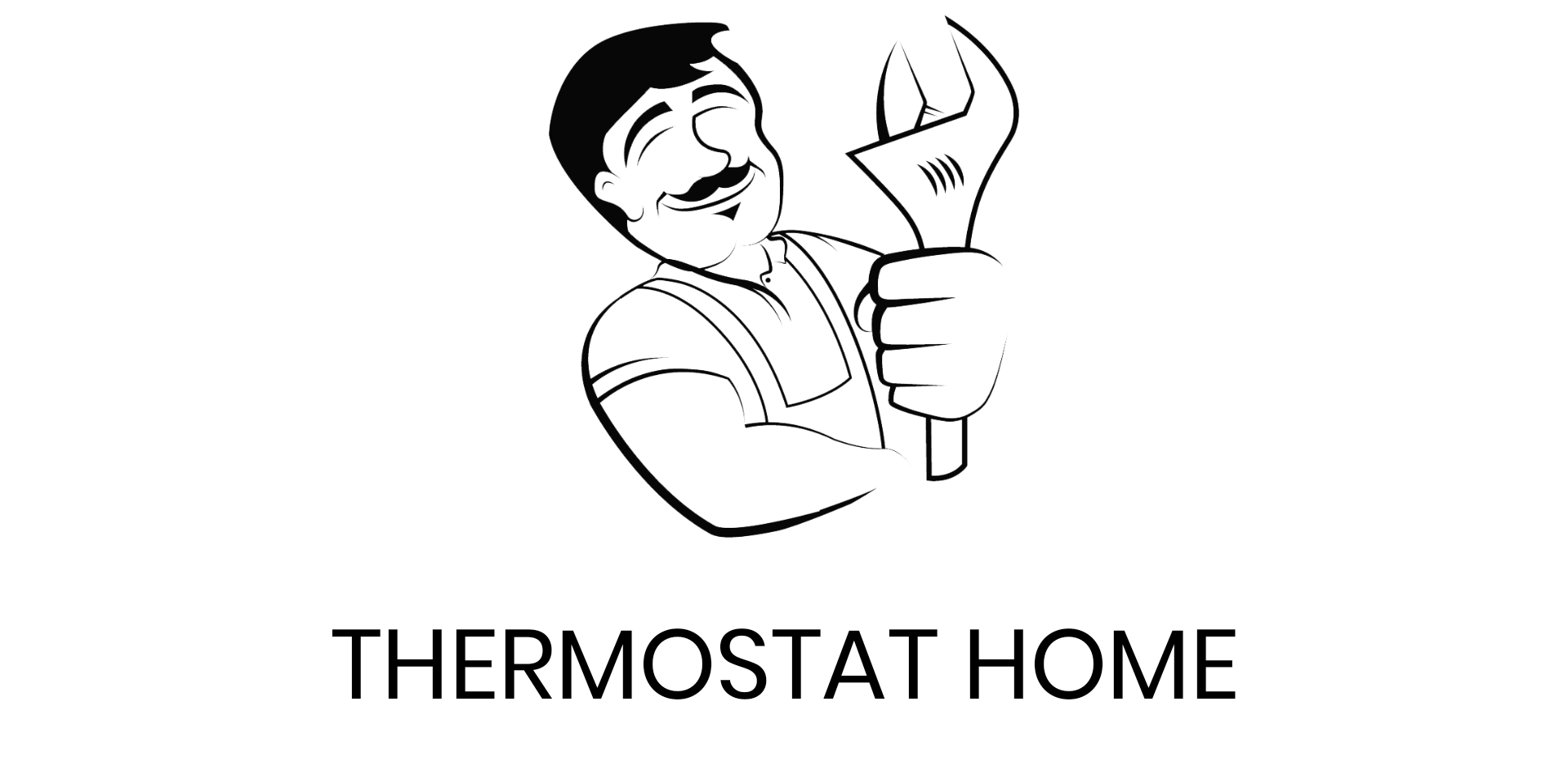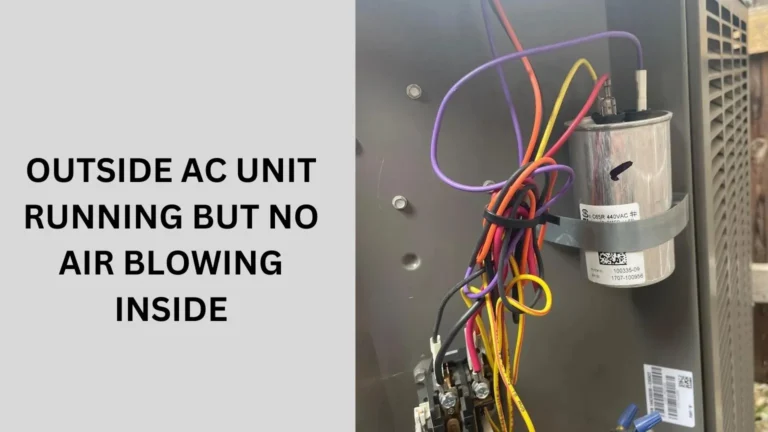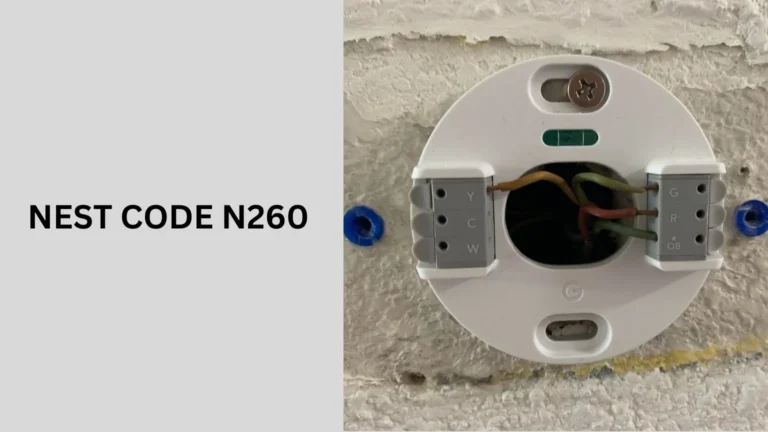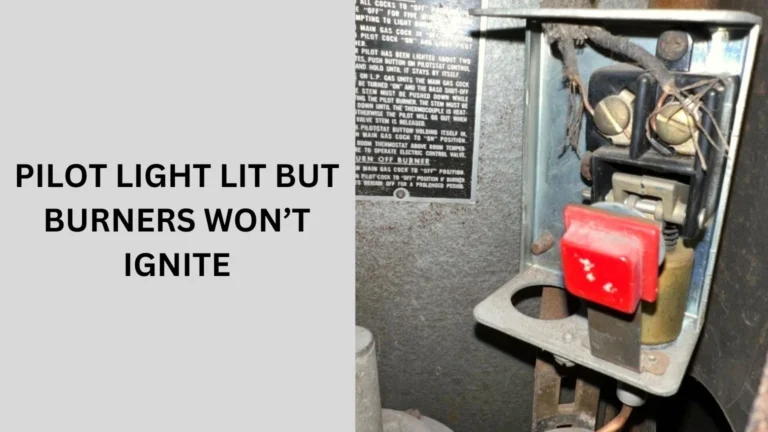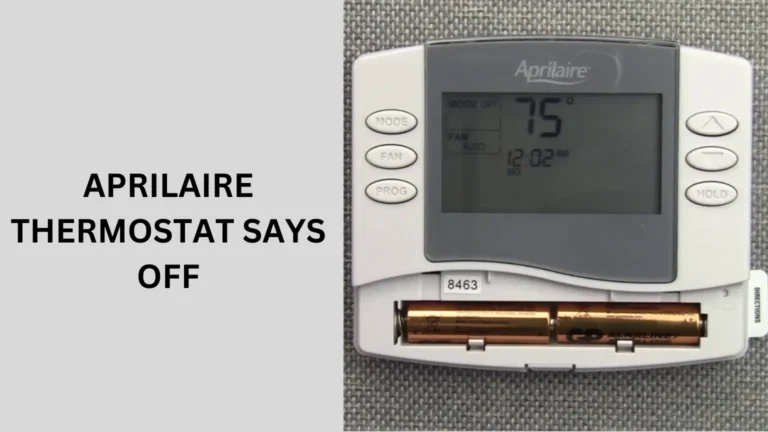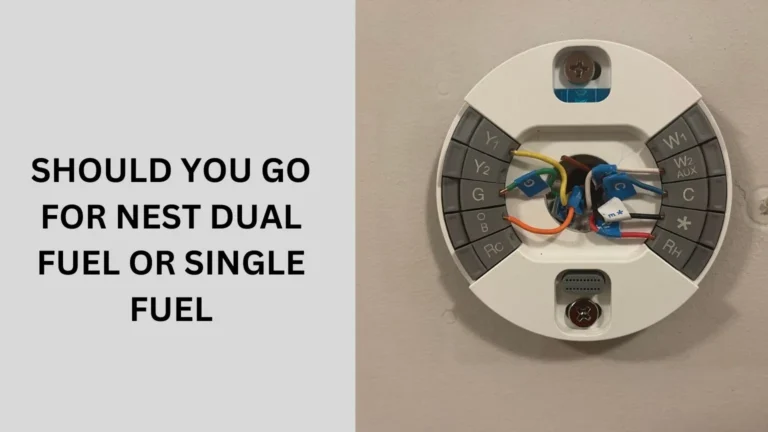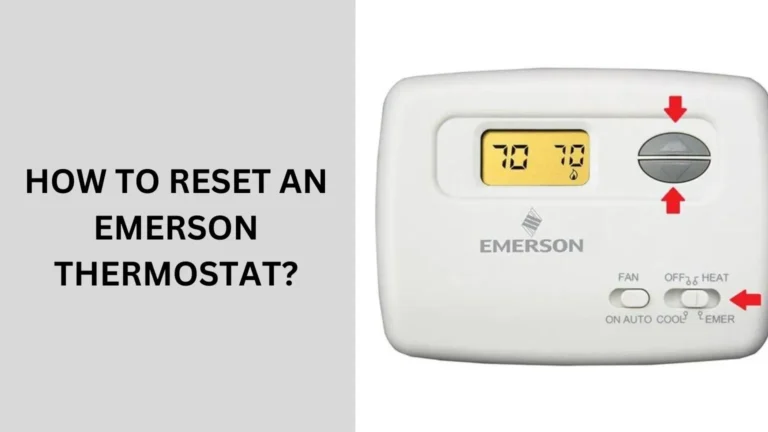Nest Thermostat Wiring For Heat Pump: Troubleshooting Guide
The integration of smart technology into homes has become increasingly popular, with devices like the Nest Thermostat revolutionizing how we control indoor climates.
For homeowners with heat pump systems, understanding how to properly wire a Nest Thermostat can optimize energy efficiency and comfort.
Nest Thermostat Wiring For Heat Pump, This article provides a comprehensive guide to Nest Thermostat wiring specifically tailored for heat pump systems.
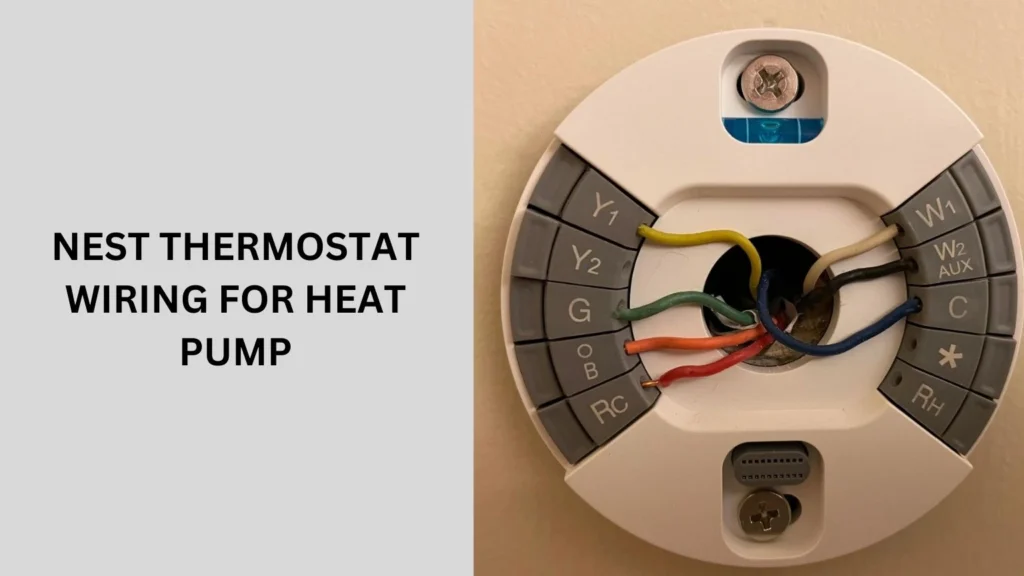
Introduction to Nest Thermostat and Heat Pump Systems
Before delving into the wiring specifics, it’s crucial to grasp the fundamentals. The Nest Thermostat is a smart device that learns your heating and cooling preferences, adjusts accordingly, and can be controlled remotely via a mobile app.
On the other hand, heat pump systems are efficient HVAC units that provide both heating and cooling by transferring heat between indoor and outdoor environments.
Understanding the Basics of Nest Thermostat Wiring
Wiring a Nest Thermostat to a heat pump system might seem daunting at first, but breaking it down into simpler steps can make the process manageable.
In this section, we will cover the essentials, including compatibility, required components, and the basic steps involved in wiring a Nest Thermostat for a heat pump system.
Compatibility with Heat Pump Systems
One of the first considerations when wiring a Nest Thermostat for a heat pump is compatibility.
Fortunately, Nest Thermostats are designed to work with a wide range of HVAC systems, including heat pumps.
However, it’s essential to verify compatibility using Nest’s online compatibility checker or consulting with a professional.
Components Required for Wiring
Before starting the wiring process, gather the necessary components, including the Nest Thermostat, a screwdriver, wire labels, and a smartphone or computer for setup and control.
Step-by-Step Guide Nest Thermostat Wiring For Heat Pump
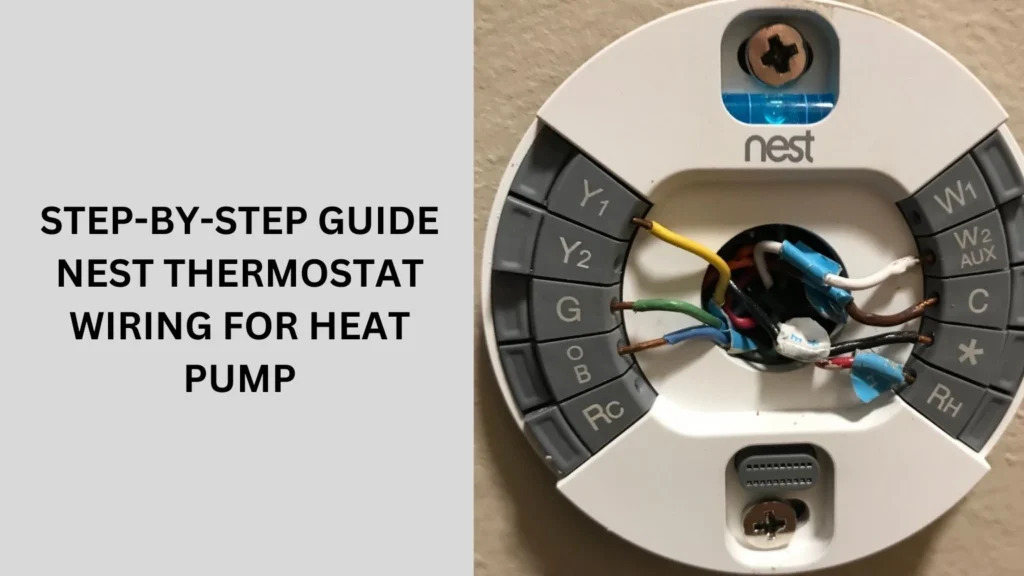
Wiring a Nest Thermostat to your heat pump system might seem like a challenging task, but with a systematic approach, it can be quite straightforward.
Here’s a detailed, step-by-step guide to help you through the process.
Checking Compatibility
Before you begin, ensure that your heat pump system is compatible with the Nest Thermostat.
Use Nest’s online compatibility checker or refer to the user manual of your heat pump system. This step is crucial to avoid any potential issues later on.
Turning Off Power
Safety first! Turn off the power to your HVAC system at the circuit breaker. This prevents any electrical accidents while you are handling the wires.
Removing Old Thermostat
- Take Off the Cover: Carefully remove the cover of your old thermostat. This will expose the wiring and the terminals.
- Take a Picture: Before you disconnect any wires, take a picture of the wiring setup. This will be a helpful reference if you need to check the original wiring configuration.
Labeling Wires
Using the wire labels provided with your Nest Thermostat or making your own, label each wire based on the terminal it was connected to on the old thermostat.
Typical labels might include R, W, Y, G, O/B, and C. This step is crucial for ensuring you connect the wires correctly to the Nest Thermostat.
Connecting Wires to Nest Thermostat
- Install the Base Plate: Attach the base plate of the Nest Thermostat to the wall where the old thermostat was mounted. Use the provided screws to secure it.
- Insert Wires: Following the labels, insert each wire into the corresponding terminal on the Nest Thermostat base. For example, connect the R wire to the R terminal, the Y wire to the Y terminal, and so on.
- Secure Wires: Ensure that each wire is firmly connected and that there are no loose ends.
Mounting the Thermostat
- Attach the Display: Once all wires are connected, attach the Nest Thermostat display to the base plate. It should snap into place easily.
- Turn on the Power: After mounting the thermostat, turn the power back on at the circuit breaker.
Testing and Troubleshooting
- Initial Setup: Follow the on-screen instructions on the Nest Thermostat to complete the initial setup. This includes connecting to Wi-Fi and setting your preferences.
- Test the System: Test both the heating and cooling functions to ensure that the Nest Thermostat is controlling your heat pump system correctly.
- Troubleshoot Common Issues:
- No Power to Thermostat: Check that the circuit breaker is on and that all wires are securely connected.
- Incorrect Temperature Readings: Ensure the thermostat is mounted in a central location, away from direct sunlight or drafts.
Testing and Troubleshooting
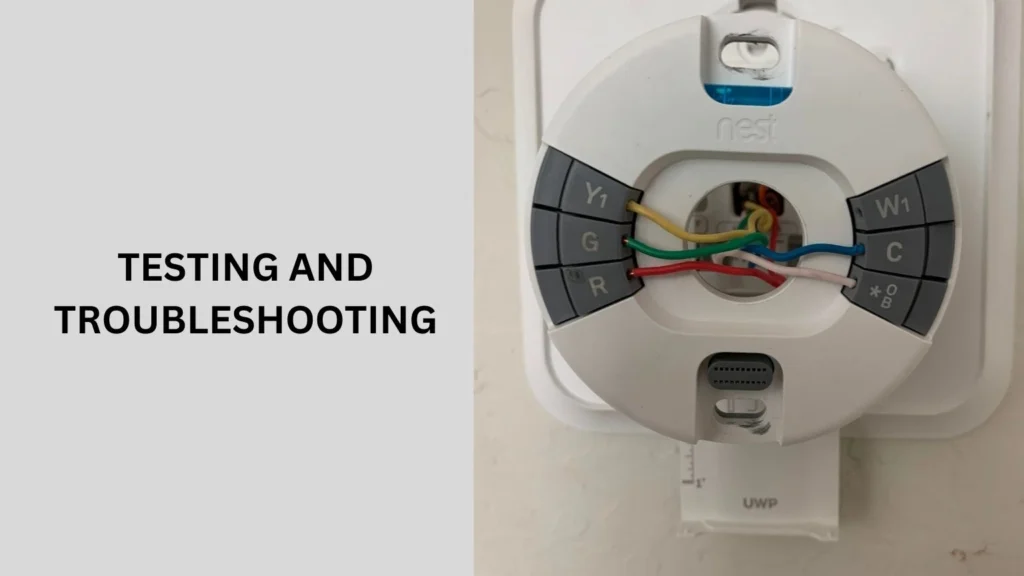
Once you have wired and installed your Nest Thermostat to your heat pump system, the next crucial step is to test and troubleshoot to ensure everything is functioning correctly.
This section will guide you through the testing process and offer solutions for common issues that may arise.
Testing the System
- Power On: Turn the power back on at the circuit breaker. Your Nest Thermostat should light up and begin its startup process.
- Follow Setup Instructions: The Nest Thermostat will prompt you to complete the setup process. Follow the on-screen instructions to connect to Wi-Fi, set up your account, and input your heating and cooling preferences.
- System Test:
- Heating Test: Set the thermostat to a temperature higher than the current room temperature to test the heating function. Listen for the heat pump to activate and feel for warm air from the vents.
- Cooling Test: Set the thermostat to a temperature lower than the current room temperature to test the cooling function. Listen for the heat pump to activate and feel for cool air from the vents.
- Check System Mode: Ensure the system switches correctly between heating and cooling modes. The Nest Thermostat should display the current mode on its screen.
Common Wiring Issues and Solutions
Even with careful installation, issues can sometimes arise. Here are some common problems and their solutions:
No Power to the Thermostat
- Check Circuit Breaker: Ensure the breaker is turned on and supplying power to the HVAC system.
- Verify Wire Connections: Double-check that all wires are securely connected to the correct terminals on the Nest Thermostat.
- Check C-Wire: If your system requires a C-wire for continuous power and you don’t have one, you might need a C-wire adapter or professional assistance.
Incorrect Temperature Readings
- Placement: Ensure the thermostat is mounted in a central location, away from direct sunlight, drafts, or heat sources like appliances.
- Calibration: Sometimes, the thermostat needs time to calibrate. Allow it a few hours to adjust and provide accurate readings.
System Not Heating or Cooling
- Mode Settings: Ensure the thermostat is set to the correct mode (heat or cool) and that the temperature setting is appropriate.
- Wiring Configuration: Recheck your wiring configuration against the Nest installation guide. Ensure the O/B wire is correctly configured for your heat pump.
- Heat Pump Balance: In the thermostat settings, ensure the heat pump balance is correctly set for your climate and preferences.
Fan Not Operating
- G Wire Connection: Make sure the G wire is properly connected to the G terminal on the thermostat base.
- Fan Settings: Check the fan settings in the Nest Thermostat menu to ensure the fan is set to run as desired (auto or manual settings).
Advanced Troubleshooting
If basic troubleshooting does not resolve the issues, consider these advanced steps:
- Reset the Thermostat: Sometimes, resetting the thermostat to factory settings and starting the setup process anew can resolve persistent issues.
- Firmware Update: Ensure your Nest Thermostat is running the latest firmware. Updates can fix bugs and improve compatibility.
- Professional Help: If you encounter complex issues or if your system is not functioning as expected after following all troubleshooting steps, consider contacting a professional HVAC technician for assistance.
Testing Tips
- Patience: Allow the thermostat a few minutes to react to temperature changes. Heat pumps, in particular, may take a bit longer to respond compared to traditional HVAC systems.
- Observe: Pay attention to any error messages displayed on the thermostat. These can provide valuable clues for troubleshooting.
- Document: Keep a record of any steps you take during troubleshooting, as this can be helpful if you need to seek professional assistance.
Benefits of Using Nest Thermostat with Heat Pump Systems
Integrating a Nest Thermostat with a heat pump system offers several benefits, including:
- Energy savings through intelligent temperature control
- Remote access and control via the Nest app
- Adaptive learning for personalized comfort settings
- Compatibility with other smart home devices for seamless automation
People also ask
Can you connect a Nest thermostat to a heat pump?
Yes, you can connect a Nest Thermostat to a heat pump. Nest Thermostats are designed to be compatible with most heat pump systems,
allowing you to control both heating and cooling functions efficiently. Ensure to follow the specific wiring instructions for your model, label wires correctly,
and confirm compatibility using Nest’s online checker for a smooth installation process.
Does your heat pump use an O wire or a B wire?
To determine if your heat pump uses an O wire or a B wire, check the wiring of your existing thermostat or refer to your heat pump’s manual. Generally:
O wire: Used to reverse the valve for cooling mode.
B wire: Used to reverse the valve for heating mode.
What wire do you use for a heat pump thermostat?
For a heat pump thermostat, you typically use the following wires:
R (Red): Power
Y (Yellow): Compressor
G (Green): Fan
O/B (Orange/Blue): Reversing valve (O for cooling, B for heating)
W (White): Auxiliary heat
C (Blue or Black): Common wire (if needed for continuous power)
Which wire is for heat on Nest thermostat?
For a Nest Thermostat, the wire for heat is typically the W wire (White).
In a heat pump system, the W1 wire may control auxiliary or emergency heat.
Always check your system’s manual and the Nest installation guide for specific wiring details.
Conclusion
In conclusion, Nest Thermostat Wiring For Heat Pump, wiring a Nest Thermostat for a heat pump system is a manageable task that can significantly enhance your home’s energy efficiency and comfort levels.
By following the step-by-step guide and ensuring compatibility and proper installation, you can enjoy the benefits of smart climate control.
